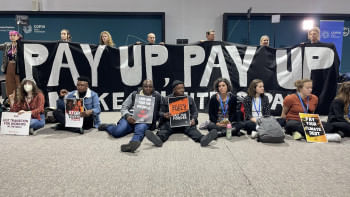Dipankar Dipon shares his success 'Formula' for Dhaka Attack

With his debut film “Dhaka Attack” continuing its sweeping run in cinemas across the country, director Dipankar Dipon talks to The Daily Star about the conceptualization, design and inside stories from the film.
How did the idea and story of “Dhaka Attack” come about?
Dipon: I was meeting my friend Sunny (Sunny Sanwar, ADC of Dhaka Metropolitan Police and story writer of “Dhaka Attack”) at the Detective Branch of Police office for some other work, and I saw a group of policemen sitting with headphones on with laptops, kind of like a cyber café. I asked him what they are doing, and he told me they were analyzing phone calls. This was new to me; until then, for me the image of police was just in police stations. I had just come back from Mumbai and was looking for stories to make a film, and I felt like general people don't know this side of policing and it could be a premise. So we submitted a proposal and did a presentation to the erstwhile commissioner of police, and he was very interested. He told me that it should not become a documentary; it has to be a cinema. That day I felt like I found what I was looking for. Sunny wrote a very modern story, and a team of us started giving it cinematic structure; a screenplay, dialogue etc. At every stage we found a new challenge and we focused on that.
What was your target audience for the film?
Dipon: You cannot really plan it. If you make a film with a lot of care for one target group, others will also like it. “The Lion King” or “Shrek” were made for children only, but there is no age group that hasn't loved them. I thought what I wanted my film to be, and I ended up with a three-point formula. The first was: after entering the cinema, I wanted the audience to forget what problems he has at home. This is what people want when they go to a cinema: to be immersed in another world. So I had to make the audience believe that this world exists; these characters exist. The second was: the story has to be unpredictable. We naturally want to assume what will happen next. If I could do that, I would get the audience's respect, and keep them hooked to the film. The third was I wanted to create some experiences that can only be enjoyed on the big screen, and not on as phone or computer display. I have seen in India when “Dabangg” released, outside the cinema hall they were selling the film's CD for 20 Rupees, but people were buying a 400 Rupees to see it in theatres. I thought my target demographic will be ages 15-30. These are the people who have the time, energy and means to spend time with friends, and go out most. If I could get them to watch my film, I'd have a big audience.
“Dhaka Attack” is successful among audiences of all classes. Why do you think it is?
Dipon: I believe the gap between the 'class' and the 'mass' is becoming smaller … although I don't believe in those terms myself. I wanted to walk right down the middle of that gap. I have seen the film in many different cinemas, and realized one thing: the points in the film where the multiplex audience claps doesn't get the same response in single-screens; and vice versa. We designed the film in a way as to tap into the emotions of audience of all classes. You may ask why the heroine will try to stop his lover from going into danger at a climax moment, but it is true. At one point, we become selfish. We don't see the greater good of the country if it at the cost of our loved ones. And it may not seem realistic from the general storyline, but if you look at it from the girl's point of view, it is realistic.
The villain of the film was a big surprise to the audience. How did you end up casting Taskeen Rahman for it?
Dipon: We auditioned many people for it before casting him. At the auditions we would show a killing scene from “No Country For Old Men” with Javier Bardem. That is the character we wanted: looks normal from the outside but if you look at his eyes you'll know something is seriously wrong with him. Meanwhile, Taskeen's role model for this was Heath Ledger's The Joker (from “The Dark Knight”). So the character of Jisan became a combination of the two. We needed a villain who is not instantly recognizable by the audience, because he appears in disguise a few times before his reveal. But it had to be a character with a strong back-story and powerful acting so people would believe this one small-framed guy can cause so much carnage. And Taskeen played the role so well that it saved us; because if Taskeen failed in his role, it would be hard for the film to succeed.


 For all latest news, follow The Daily Star's Google News channel.
For all latest news, follow The Daily Star's Google News channel. 



Comments